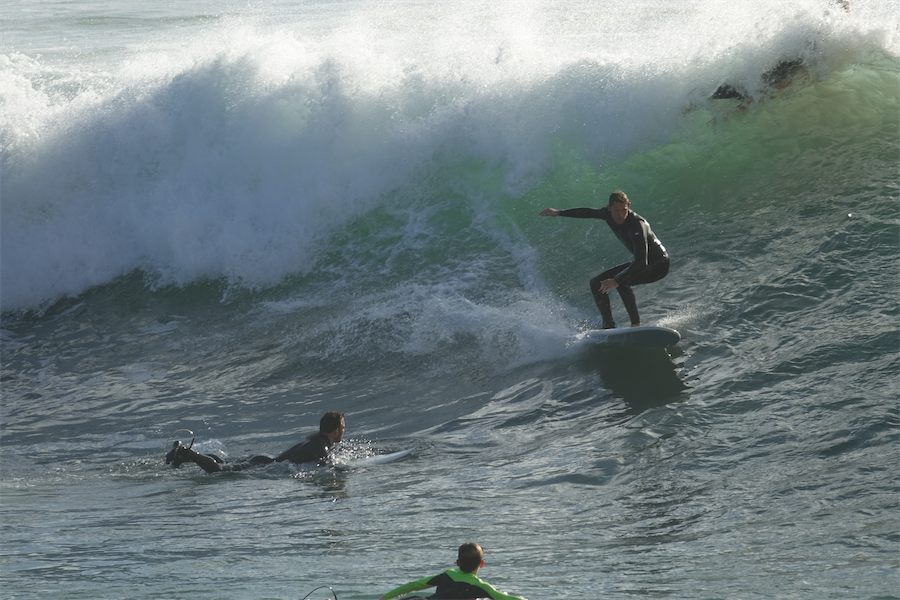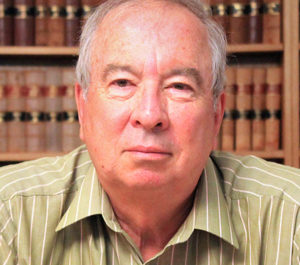
“Waves can be great fun – but can also be powerful and dangerous and should be treated with respect,” writes columnist CLIVE WILLIAMS.
I’VE spent a lot of time either in or on water, particularly the ocean, so my interest in waves of the watery kind is perhaps not surprising.

Many Canberrans spend time on the coast or visit the south coast (when not being made unwelcome by covid fears), so I assume they would also be interested in waves.
People who fish from rock shelves should definitely take an interest in waves, if only for survival reasons.
Waves are most commonly caused by wind. When wind blows across the surface of the ocean (or lake), it creates waves. Locally generated “short wavelength waves” have an interval between crests of less than 20 seconds. They carry less energy and dissipate faster than “long wavelength waves”.
Long wavelength waves or “swell waves” with wave crest intervals of more than 20 seconds are usually created by weather conditions far from shore in deep water. They become larger as they move closer to shallow water and the shoreline.
The further they travel from their source, the more likely they are to fall into a relatively predictable sequence. According to Fabrice Veron, director of physical ocean science and engineering at the University of Delaware, swell waves will commonly arrive in groups of 12 to 16 waves.
The first wave in a group or set will be small, the next one bigger, and so on, with the biggest wave being in the middle of the group. If there are 14 waves in a group, the seventh wave is going to be the biggest.
The speed of waves coming to shore is usually around 12-16 kp/h.
As a wave reaches the shore, the lower part slows down due to friction with the shallowing bottom, and the top of the wave “breaks”. It usually does so in a water depth 1.3 times the wave height. A steep shoreline will result in “dumping” waves. A more gradual slope – as at low tide – will create long running waves that are good for bodyboarding.
The size of swell waves may also be affected by underwater topography. Nazaré in Portugal is the home of big-wave surfing because the underwater Nazaré Canyon dramatically enlarges incoming wave heights to around 35 metres (the height of a nine-storey building).
Large swell waves can also be generated by underwater seismic disturbances. The most dangerous are “tsunamis” that can travel at up to 760 kp/h and build vertically on reaching a shoreline to as high as 30 metres. The 2004 Indian Ocean tsunami caused more than 200,000 deaths. The largest tsunami wave ever recorded was 525 metres high.
“Rogue waves” are unusually large surface waves occurring at sea. They can be extremely dangerous because they are rare, unpredictable, and can strike a ship with tremendous force. Rogue waves occur where physical factors such as high winds and strong currents cause big waves to merge.
In 2004, US Naval Research Laboratory ocean-floor pressure sensors detected a rogue wave caused by Hurricane Ivan in the Gulf of Mexico that was 27.7 metres high from peak to trough, and around 200 metres long. Mariners have long reported rogue waves 25 plus metres high.
Fishing off rocks is said to be the most dangerous sport in Australia, with an average 13 deaths a year. The main threat is a large wave sweeping across a slippery rock shelf.
Waves can be great fun – but can also be powerful and dangerous and should be treated with respect. And never bodysurf a dumping wave!
Clive Williams is a Canberra columnist
Who can be trusted?
In a world of spin and confusion, there’s never been a more important time to support independent journalism in Canberra.
If you trust our work online and want to enforce the power of independent voices, I invite you to make a small contribution.
Every dollar of support is invested back into our journalism to help keep citynews.com.au strong and free.
Thank you,
Ian Meikle, editor





Leave a Reply